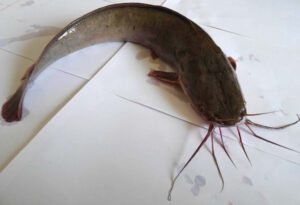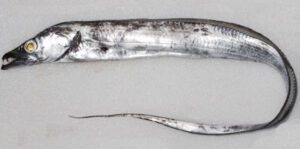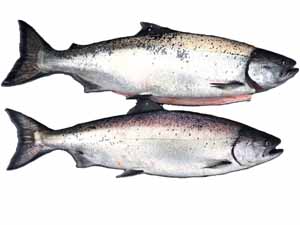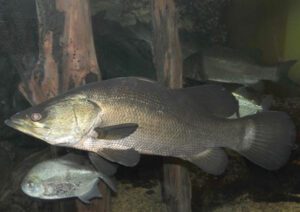The Madeiran Sardinella fish is a species of ray-finned fish which is found mainly in the Eastern Atlantic and Southeastern Mediterranean. It is small fish species in the genus Sardinella.
It is also known by many other different names such as Short-bodied Sardine, Pilchard, Madeiran Sardinelle, Madeiran Sardinella and Herring. And the binomial name is ‘Sardinella maderensis‘.
Currently the Madeiran Sardinella fish is common in the Eastern Central Atlantic where it is commercially exploited, and also found in the Mediterranean Sea.
Total population of this fish species is decreasing, mainly because of overfishing. Currently the fish species is listed as ‘vulnerable‘ by the IUCN. Read some more information about this fish species below.
Madeiran Sardinella Fish Characteristics
The Madeiran Sardinella fish is a small sized fish. It is mainly silvery in coloration, similar to the Round Sardinella. But it can be distinguished from S. aurita by having grey caudal fins with black tips. Their body is distinctly elongate, and have a variably protruding belly.

They have a median number of gill rakers and their upper pectoral fin rays are white on the outer side with a black membrane in between. Average body length of the mature fish is around 25 cm, with a maximum recorded body length of 30 cm. Maximum recorded body weight of the mature fish is 927 grams. Photo and info from Wikipedia.
Diet
The Madeiran Sardinella fish are mainly feed on phytoplankton and fish. They also consume a variety of small planktonic invertebrates.
Breeding
The Madeiran Sardinella fish become mature within their 3 years of age, and they breed only once in the year. Their breeding season is during the warm season in coastal waters.
Uses
The Madeiran Sardinella fish is mainly used for food. It is marketed fresh, frozen, smoked, dried, canned and salted. It is also used as bait in fisheries.
Special Notes
The Madeiran Sardinella fish is a pelagic, oceanodromous species that forms schools in coastal waters. It has high commercial importance. But it has relatively less importance in the Mediterranean Sea.
Total catches have decreased from 1.8 tonnes per trip in 2003 down to 1.5 tonnes in the following 2 years. Morocco and off the coasts of Senegal are the major fishing grounds for these fish.
The Madeiran Sardinella fish can tolerate very low salinity when they travel into estuaries and lagoons and spend most of their lives near the surface of the water.
It is a very fast growing fish species, and they grow about 12 cm within their first year. And some larger fish can grow as much as 35 cm. However, review full breed profile of this fish in the table below.
| Name | Madeiran Sardinella |
| Kingdom | Animalia |
| Phylum | Chordata |
| Class | Actinopterygii |
| Order | Clupeiformes |
| Family | Clupeidae |
| Genus | Sardinella |
| Species | S. maderensis |
| Binomial Name | Sardinella maderensis |
| Other Names | Short-bodied Sardine, Pilchard, Madeiran Sardinelle, Madeiran Sardinella and Herring etc. |
| Breed Purpose | Mainly food, also bait |
| Weight | Can reach up to about 927 grams |
| Special Notes | Pelagic, oceanodromous fish species, breed only once per year, forms schools in coastal waters, has high commercial importance, countries with largest catches are Morocco and Senegal, can tolerate very low salinity, fast growing fish species, can grow about 12 cm within their first year, some fish can grow as much as 35 cm, used mainly for food, also used as bait |
| Breeding Method | Natural |
| Climate Tolerance | Native climates |
| Body Color | Silvery |
| Rarity | Common |
| Availability | Worldwide |





